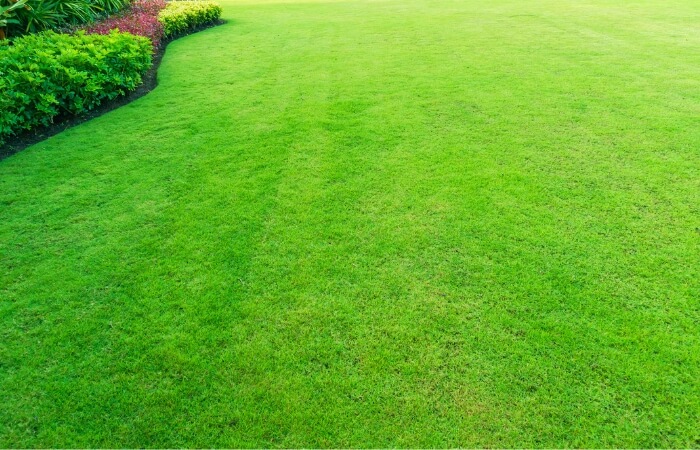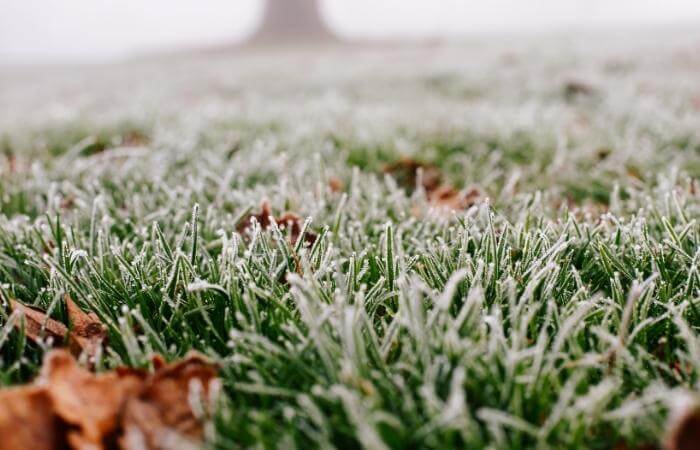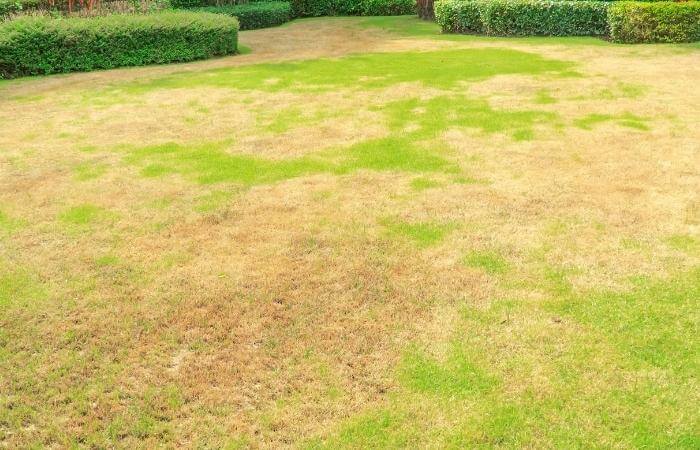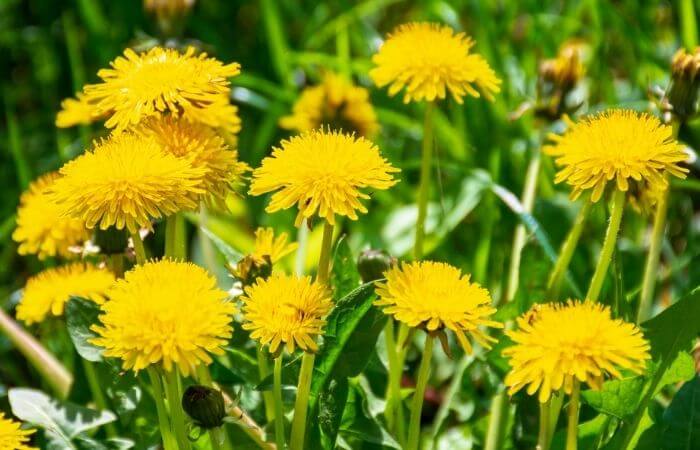The nicest lawns are an expanse of rich, lush grass, with no random patches of lighter or darker green.
Fertilization or watering issues, fungi or disease, pets, or even the variety of grass you plant can affect lawn color, but how do you prevent it from ruining the look of your yard?

Achieving a solid carpet of vibrant green grass is easy if you follow this guide that explains why your grass has different shades of green and how to fix it.
Light Green Grass In Lawn
The most common cause of light green grass in your lawn is insufficient soil nitrogen. Yellowing of the grass also indicates low nitrogen.
While a general grass fertilizer offers nitrogen, phosphorus, and potassium as ingredients, it’s the nitrogen that boosts chlorophyll in the grass blades and the shade of green.
How to Fix Low Nitrogen in Lawn Soil
The first step to fixing low nitrogen issues is to test your lawn’s soil using an at-home soil test kit or by taking a sample to a local cooperative extension for a more comprehensive soil analysis.
Once you know what your soil lacks in nutrients, you can add the correct amount of nitrogen to your lawn. Going overboard with nitrogen burns grass, so don’t add more than you need.
If you fertilize regularly and still have issues with light patches of grass, let’s take a look at other reasons this can happen.
Grass Turns Light Green After Fertilizing?
If you notice your entire lawn taking on a lighter green or more yellowish tone after you fertilize, it’s a clear indication you’re over-fertilizing the grass.
The color change is from fertilizer burn, which happens when salts in fertilizer products pull moisture from the soil and harm the grass root system, causing them to dry out.
The best way to quickly fix a fertilizer burn problem is to water the lawn daily to help wash away excessive fertilizer salts. Keep watering until you see the lawn recover and fill in with a healthy green grass shade.
Prevent this problem from reoccurring by adjusting the amount of fertilizer you spread on your lawn.
Switch your broadcast spreader to a lower setting, and monitor your lawn condition carefully until you adjust it to the ideal level.
Grass Variety
Not all lawns are grown with a single grass seed variety. If the lawn wasn’t seeded evenly with the mixture, or someone did patch repairs with a different type of grass seed, your yard will naturally fill in with varying shades of grass.
How to Fix Grass Variety Discoloration
The first step to fixing grass color unevenness is to determine which type of grass is the main variety in your lawn. You can take a sample to a local lawn care service company, who can tell you the grass variety, or search online for grass variety types and compare it yourself.
Next, purchase grass seed that matches the rest of your lawn and enough topsoil to add a thin layer over the offending areas of light patches.
Rake and remove the thatch from the areas you want to fix. Spread out about an inch or so of topsoil over the site, and rake it out evenly. Next, spread your grass seed and water it in.
Tend to the patches by watering so the soil stays moist and the new seeds sprout and fill in. Avoid walking over the area until you need to mow it.
Water Issues
Light patches of grass can happen when it isn’t getting enough water. As the grass roots dry out, the grass turns a lighter shade of green.
How to Fix Lawn Water Issues
To fix water issues around light patches, you’ll need to inspect what could be causing the problem.
It could be as simple as the sprinkler system not reaching all the grass or other landscaping plants, or features blocking the water spray. Adjust the spray to water all the grass evenly.
It could be that you aren’t watering the lawn enough. Increase the number of times you water the lawn until you see an improvement in color.
Underlying conditions may cause the water to drain faster from that grass area. For example, the soil could be sandy or full of gravel that drains the water, or the site could be higher than the rest of the lawn.
You’ll need to peel back the grass in these sections for repair to fix soil issues.
Replace about six inches of soil with a better quality mixture that holds more moisture for dry soil areas. If the site is high, you can remove some dirt until it’s more even with the rest of the yard.
A soil moisture meter is a handy tool to easily check soil conditions.
Fungi, Diseases, Or Pests
Diseases and pests can stress grass growth and cause areas to turn light green. These issues generally start in tiny sections or appear spotty, so they are the easiest to fix if you catch them early.
- Yellow Patch disease causes lighter grass in lawns.
- Sclerotinia dollar spot is another common fungal disease that causes light green patches of grass.
- Rust disease is another lawn issue that causes grass discoloration.
- Grub or pest infestations will start with the grass becoming lighter green but could eventually kill roots and lead to bare patches.
How to Fix Diseases or Pests in Grass
Each specific type of disease or pest will do best with a targeted program to eradicate the problem so your lawn takes on an even green appearance.
Pesticides can rid the lawn of insects, grubs, and other little critters. In addition, fungicides will keep diseases from taking over.
Dark Green Spots In Lawn
The most common cause of dark green spots in lawns is from fairy rings fungal diseases.
Fairy rings in the grass can be large or small dark green rings, often with brown edges.
Damage from fairy rings can be superficial, from the fungus growing in the grass thatch, or it can be in the soil under the grass.
There are over 50 species of Basidiomycetes fungi that cause fairy rings and mushrooms in lawn grass.
Fairy rings are more common in lawns that grow over soil rich in organic matter or grass with a thick thatch layer.
Fairy rings of darker green grass patches are also more common if that lawn area gets more water.
How to Fix Dark Green Patches in Grass
The best way to prevent dark green patches is to discourage them from happening.
For low-lying areas that collect more moisture and fertilizer run-off, slowly build up the lawn by raking a thin layer of topsoil over the section and letting the grass grow through it. Perform this task until the ground is even with the rest of your lawn.
For treatment and long-term control of fungal issues and fairy rings, you’ll need to apply a fungicide that contains azoxystrobin, which is the most effective to control this disease.










